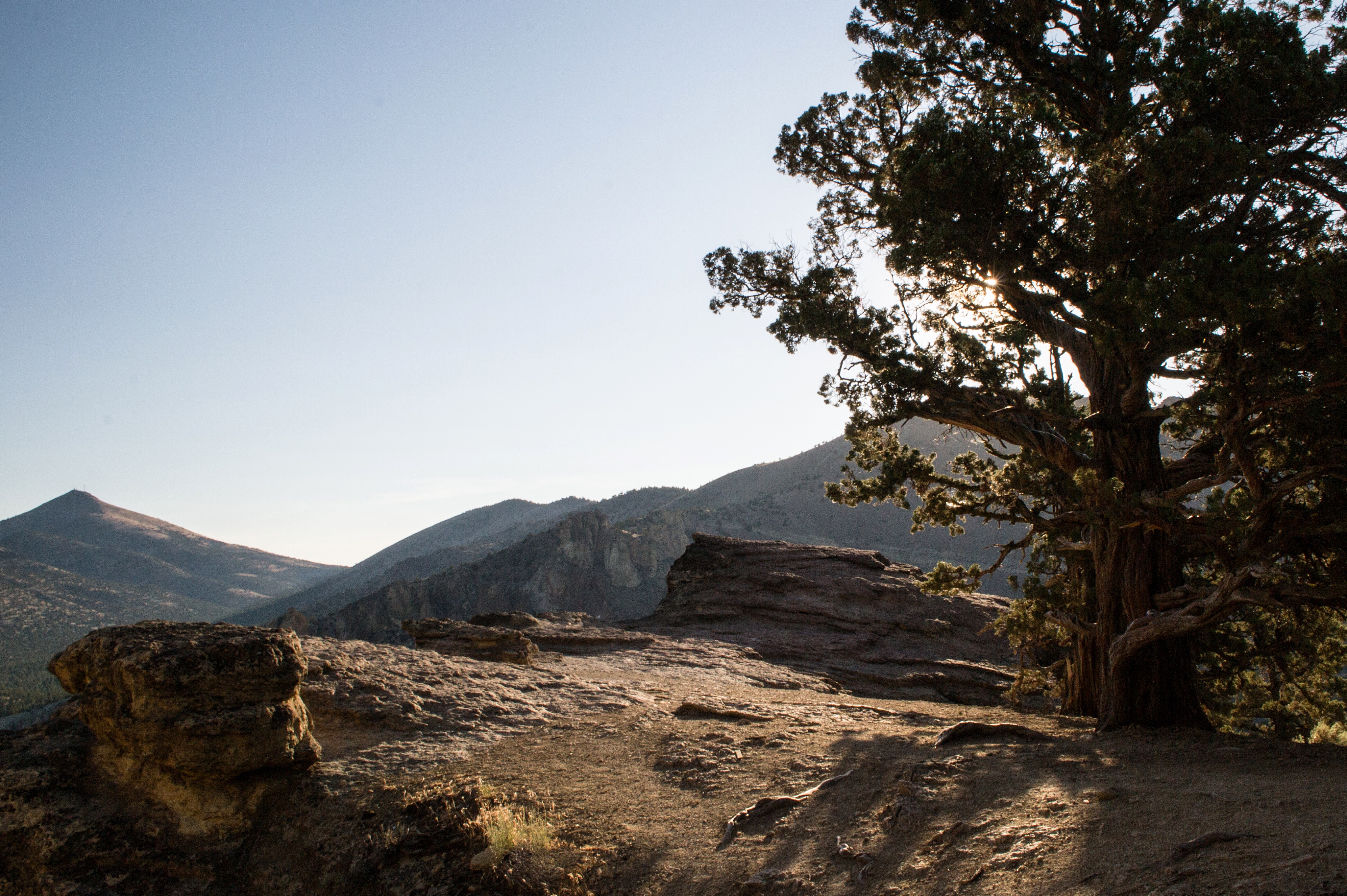How does ecological succession work?
Juniper trees can change an entire landscape
Kelsey R. Kennedy • April 25, 2016

A Western juniper tree on a rocky outcropping in Smith Rock State Park in Central Oregon [Image credit: Kelsey R. Kennedy]
When the first white settlers ventured out onto the rangeland of eastern Oregon, they found open plains with grass and scrubby sagebrush. Willows huddled around meandering creeks while twisted juniper trees clung to rocky remnants of the area’s volcanic past. Fires swept through the plains about once a decade, killing young junipers that dared to venture out into the grassland.
The grasses that once helped these fires spread across the plains soon became sparse, thanks to the settlers’ grazing cattle. Fires were far less frequent and juniper trees were soon able to establish themselves among the sagebrush. But juniper trees are greedy for water and space; the trees that have escaped the stony outcroppings choke out native plants. In 2005 there were 10 times more juniper trees in Oregon than in 1875, according to Oregon State University ecologists. The encroachment of Western juniper into the grassy plains of Oregon’s rangeland is a change in the types and distribution of species, occurring over a number of years and through a predictable series of changes that ecologists call succession.
The first stage of ecological succession looks innocuous. Young juniper trees grow from seeds scattered by birds among the grass and the sagebrush. Native grasses and shrubs still thrive. In the second stage of juniper succession, trees begin to fill out their canopies and produce berries. These fragrant pale blue orbs are actually small cones containing seeds that take up to two years to mature. The trees also form a dense network of roots in the top layers of the soil. Depending on the site, the combination of the juniper canopy and roots means little water for the grasses and shrubs.
The third stage of succession is pivotal. A majority of the shrubs in the area die, as do the grasses. The diversity of plants and animals in the ecosystem dwindles as their favored habitats are taken over by the juniper trees, and most of the land left under the juniper canopy becomes bare. As the bare soil compacts, less rainwater is absorbed and the nutrient-rich topsoil washes away.
At this stage, land managers can no longer work to prevent juniper succession. Rather, they must work to restore the ecosystem.
But different stages of succession need to be handled in different ways. And land managers — on both public and private land — face difficult decisions when it comes to choosing when and how to slow the spread of juniper trees. Early on, removing juniper seedlings with tools or a gas-powered brush cutter may be effective. Once they grow larger, the trees require larger equipment, such as chain saws and bulldozers. But one of the most useful tools, at any stage of succession, is what kept the juniper trees in check in the first place: fire.